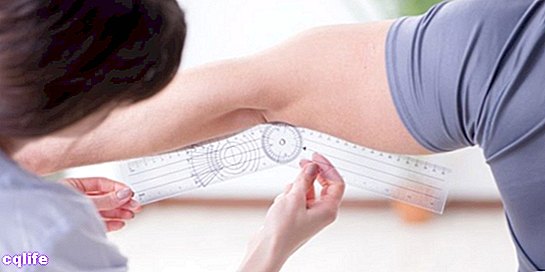- What is anthropometry?
- Static and dynamic anthropometry
- Anthropometry and ergonomics
- Anthropometry in nutrition
- Anthropometry in architecture
We explain what anthropometry is and its role in nutrition and architecture. Also, its relationship with ergonomics.

What is anthropometry?
Laa anthropometry (word formed by the Greek voices anthropos, "Man", and metrikós, "Measure") is the study scientist of the techniques of measurement of Body human. It is a branch of the anthropology physicist who is interested in proportions of the human body and its different ways of interpreting them, especially when they allow comparisons in the weather or between human groups.
Ancient civilizations like the Egyptian or the Greek applied their own methods measurement of the human body, whether for practical or artistic purposes. However, anthropometry emerged in the eighteenth century, in conjunction with physical anthropology, to the extent that scholars of the human being they wanted to make physical and bodily comparisons between a “race”And another of the humanity.
In 1870 the Anthropométrie by the Belgian Adolphe Quételet (1796-1874), considered as the fundamental work in the structuring and foundation of formal anthropometric studies. On the other hand, in the mid-twentieth century anthropometry finally proved its practical value in the industry, in a prolific period in wars and arms development.
Currently, the application areas of anthropometry cover many areas and disciplines, driven by different intentions and motives, such as certain methods of public planning and measurement of the Health of the populations, for example, since the average of the body measurements (height, thickness, weight) are indicative of the nutrition and the health of families.
Static and dynamic anthropometry

Anthropometry is classified into two types: static and dynamic.
- Static or structural anthropometry is dedicated to the measurement of the human body in its static dimensions, that is, in a fixed and determined position, whether standing or sitting, fundamental for the design of workplaces, furniture or environments.
- The dynamic or functional anthropometry that, on the contrary, considers the human body in its enormous capacity to movement, that is, the human body doing things, such as in variable work positions, emphasizing the joints and the dynamics of the body's extremities.
Anthropometry and ergonomics
Ergonomics is the discipline that studies how to adapt the work environment to the human body in the most harmonious and healthy way possible. Consequently, it is a major beneficiary of anthropometry.
Measurements of the human body and its physical understanding allow the design of increasingly ergonomic tools and work environments, that is, less damaging in the face of the human structure, and therefore less tiring and exhausting. This has a direct impact on the productivityas it extends the capacity of job of individuals, but also allows preserving the health of workers in the medium and long term.
Thus, ergonomic tools are configured taking into account the anthropometric measurements of the human body, and therefore are better adapted to it.
Anthropometry in nutrition

Another important debtor of anthropometric measurement is the nutrition, that is, the discipline that studies the feeding human life and its medium and long-term impact on populations, something very relevant for the public health.
In this case, anthropometry collaborates with nutrition because measurements of the human body make it possible to keep a record of how new generations grow and also to compare between generations. social classes, social sectors and geographic areas of a country.
In addition, anthropometry indicates how the new citizens. Thus, together with nutrition, it can find the nutritional factors that can influence it: the greater the availability of nutritional resources, the larger the size of the human body; and vice versa.
Anthropometry in architecture
The architecture It also owes much to anthropometry, since the knowledge of the standard measurements of the human body are key in the design of living spaces. The way in which a space is designed has a direct impact on people's physical, emotional and psychological health, and for this reason it is vital to fully understand the dimensions of the human body.
